Similar Posts
Continuing my photojournalism series highlighting Balkan churches, this post features an especially beloved monastery in North Macedonia – The Monastery of Saint Naum.
Saint Naum was a disciple of Saints Cyril and Methodius, and participated in their mission to spread Christianity and literacy in Europe. After completing the Moravian mission, he settled in Bulgaria and joined the literary school in Preslav. Yeats later, he moved to Ohrid and worked with Saint Clement, running the Ohrid school from 893 to 900. He then retired across the lake and built the monastery that bears his name, reposing in 910.
Of the original monastery, little remains except for the spectacular site and the saint’s miracle-working relics. The present church was mainly built in the 16th century, and most of the frescoes date from 1806. Nevertheless, the church is built in an old, even primitive, Byzantine style, and incorporates 6th-century spolia in its architecture, lending it the feel of a truly ancient monastery.
Perhaps the most special feature of the church is its carved woodwork, much of which is centuries old. The stasidia feature comical monsters on the handrests carved in folkish style, while the gilded iconostasis, made in 1711, is a masterpiece of Macedonian woodcarving.
With its diminutive scale and charming liturgical fixtures, the interior of the church of Saint Naum is impossible not to love. It has a deeply warm and holy character that is hard to compare to any other church.
Intensely contrasting with the intimate interior is the awesome landscape in which the monastery lies – between towering mountains and brilliant-blue lake Ohrid. Adjacent the monastery is a geological wonder – an artesian spring from which immense amounts of crystal-clear water bubble out of the roots of the mountain, flowing into and filling lake Ohrid. The spring forms a small lake of its own where visitors can take boat rides and picnic on the water – water that is so transparent that the bottom of the lake can be seen just as clearly as if there were no water at all – a truly strange wonder to behold.
Being a place of such beauty, the Monastery of Saint Naum draws a great happy crowd – people who come to picnic and play as well as to venerate the relics and pray for miracles.
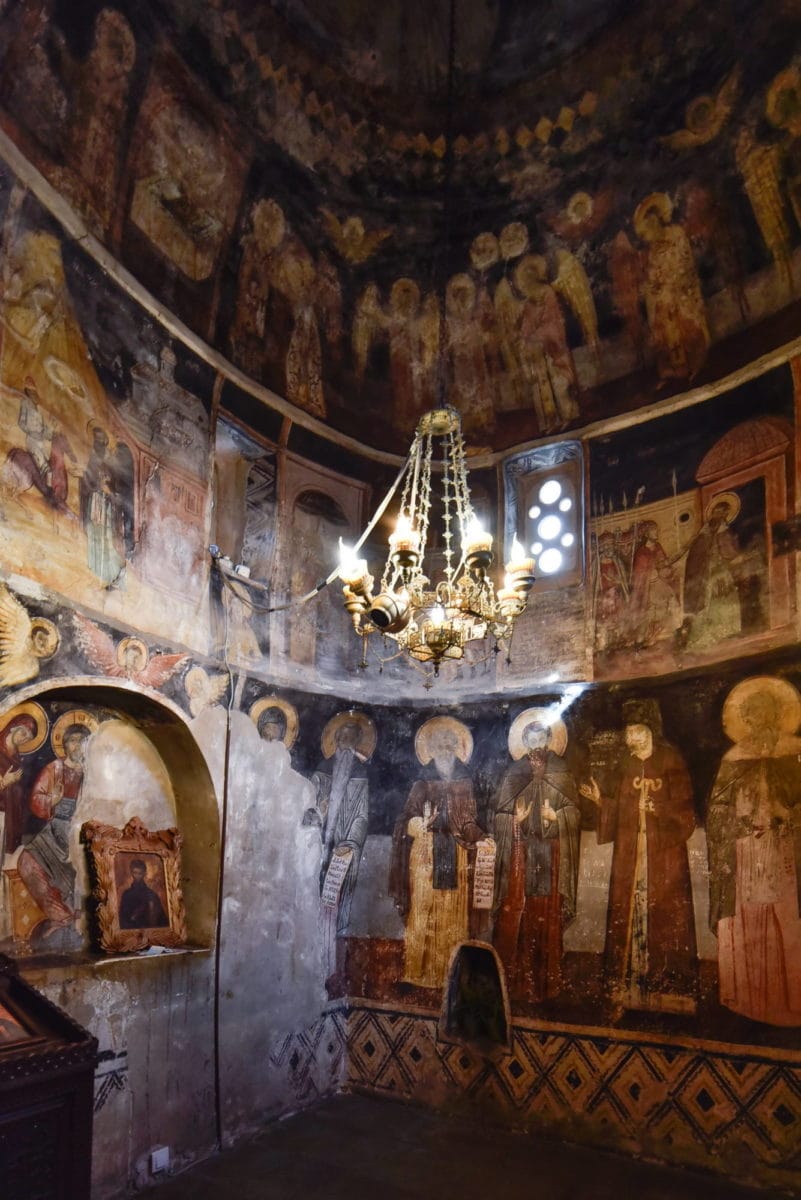
The relic-room in which the body of Saint Naum is kept – a domed chamber to the right of the narthex.
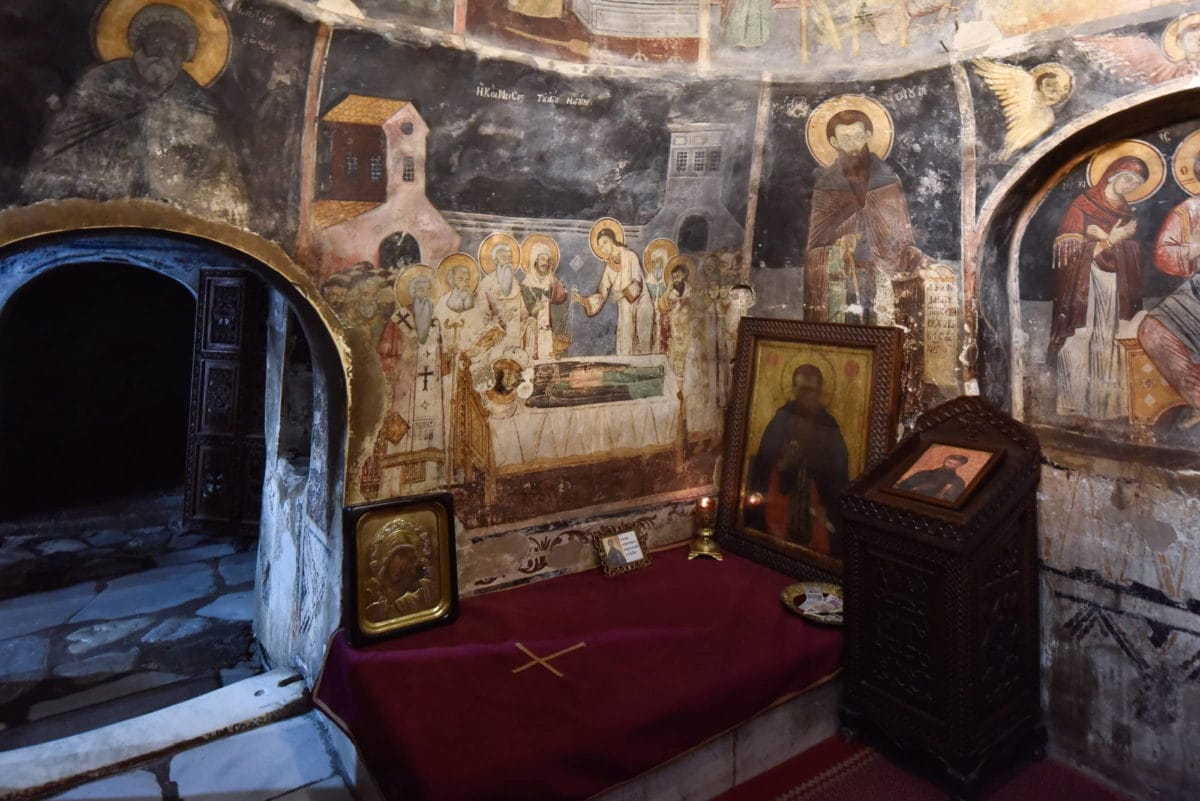
The body of Saint Naum lies under this small bed, where those needing healing can lie down and sleep.
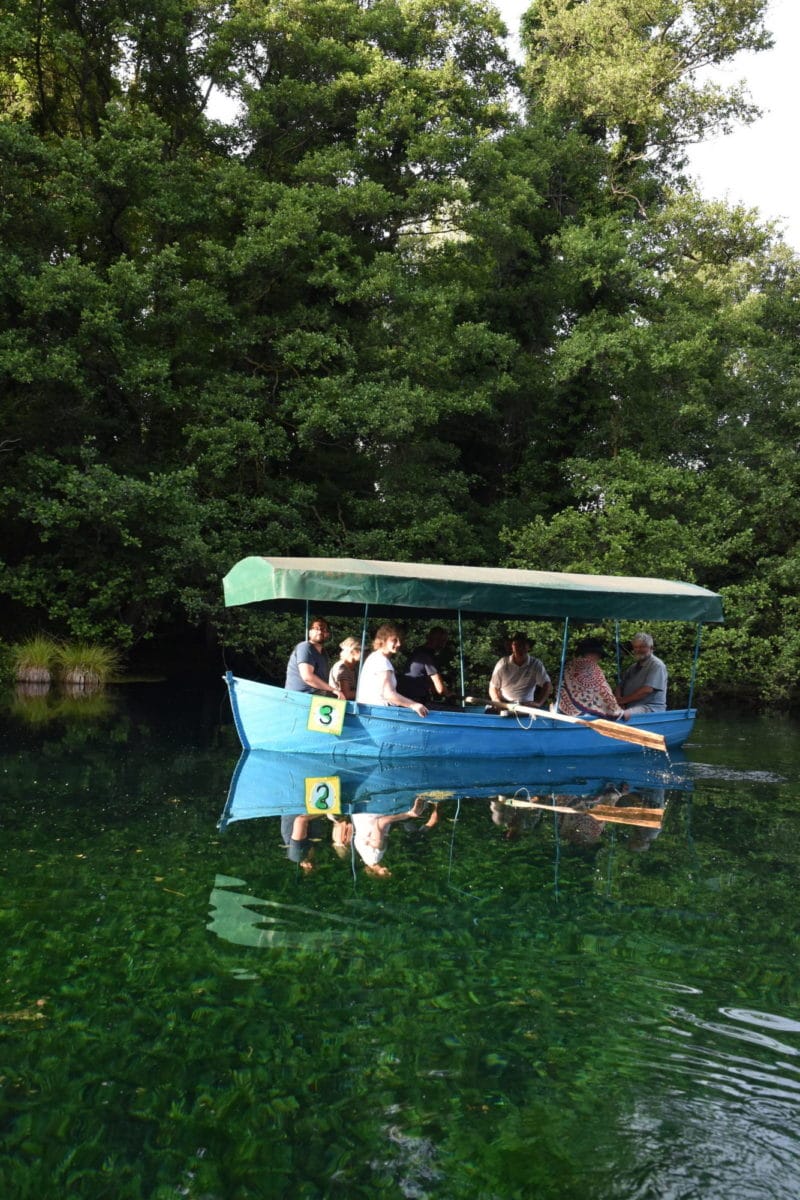
One of the boats that can be rented for a jaunt about the crystal-clear artesian spring. The water can be easily seen bubbling up from sandy patches on the lake bottom below.
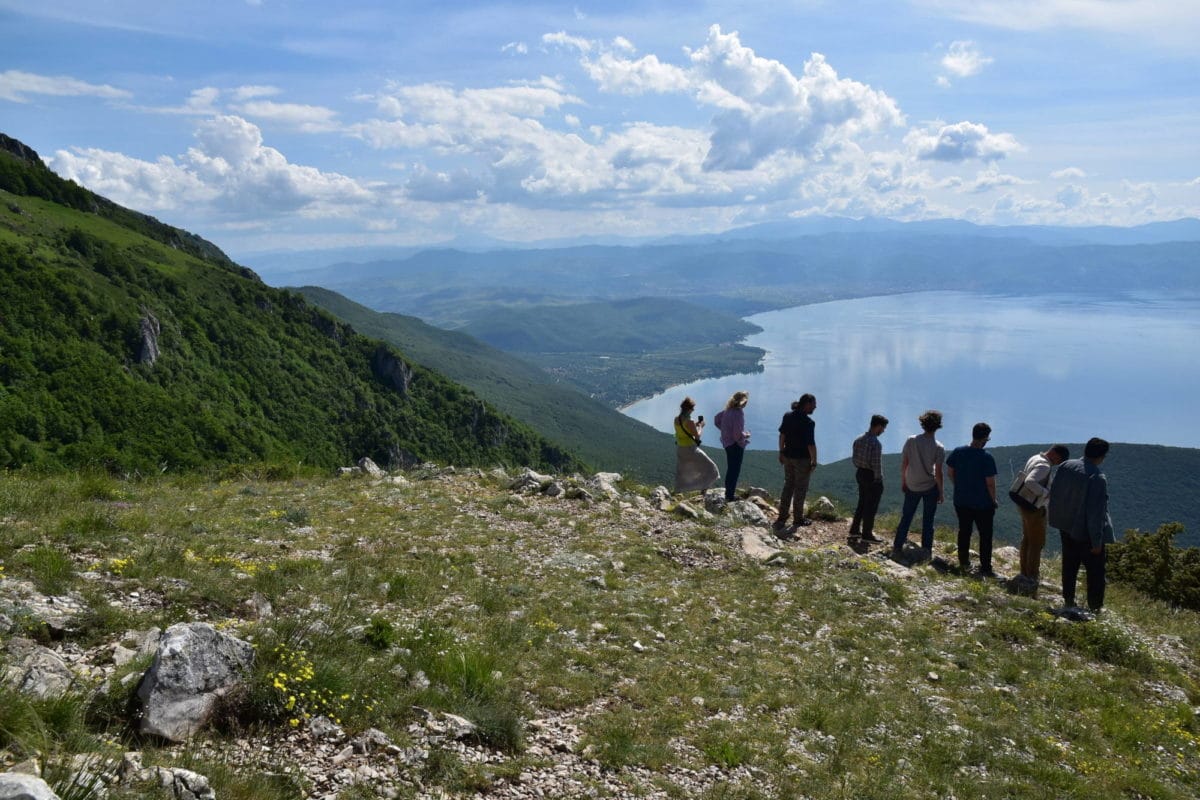
Our tour group looking down on Lake Ohrid from above the monastery, which lies on the lakefront below.
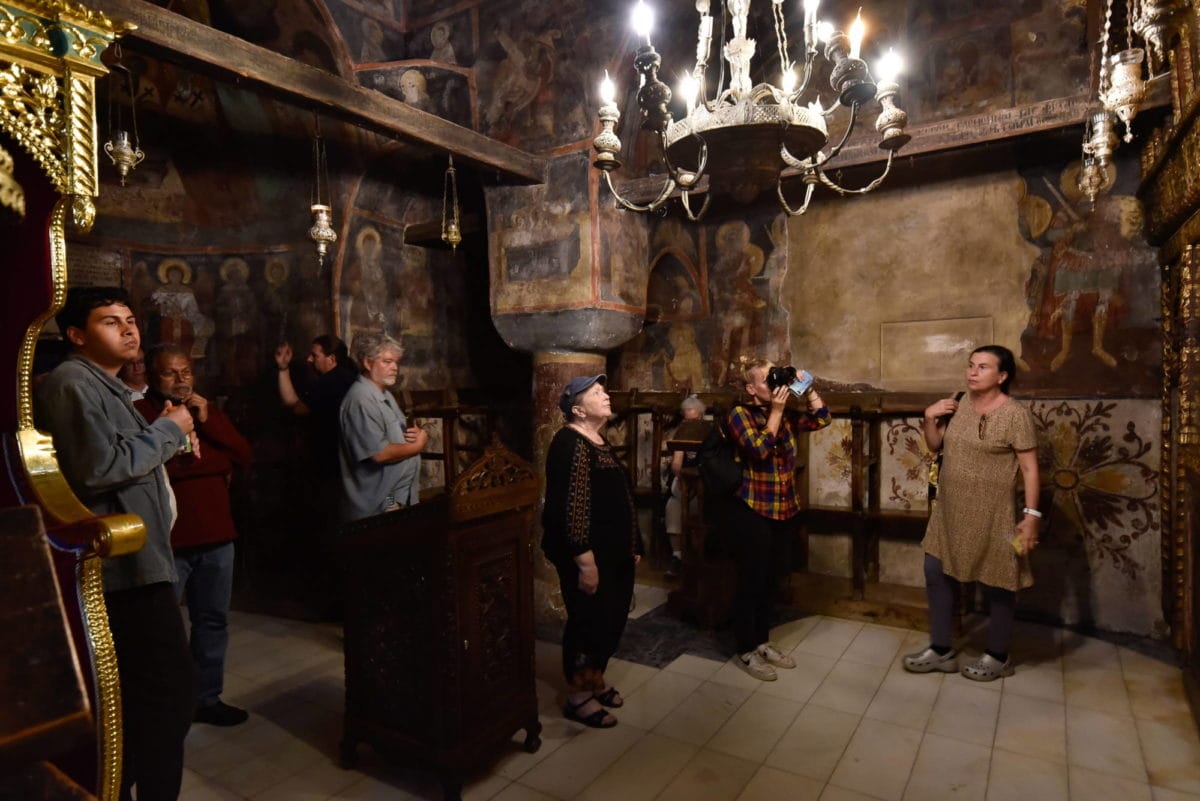
Our tour group, with Serbian guide Ivan Krucican. June 2023. Our tour was organized by Fr. Ilya Gotlinsky/Orthodox Tours, and sponsored by the Orthodox Arts Journal.
If you enjoyed this article, please use the PayPal button below to donate to support the work of the Orthodox Arts Journal. The costs to maintain the website are considerable.

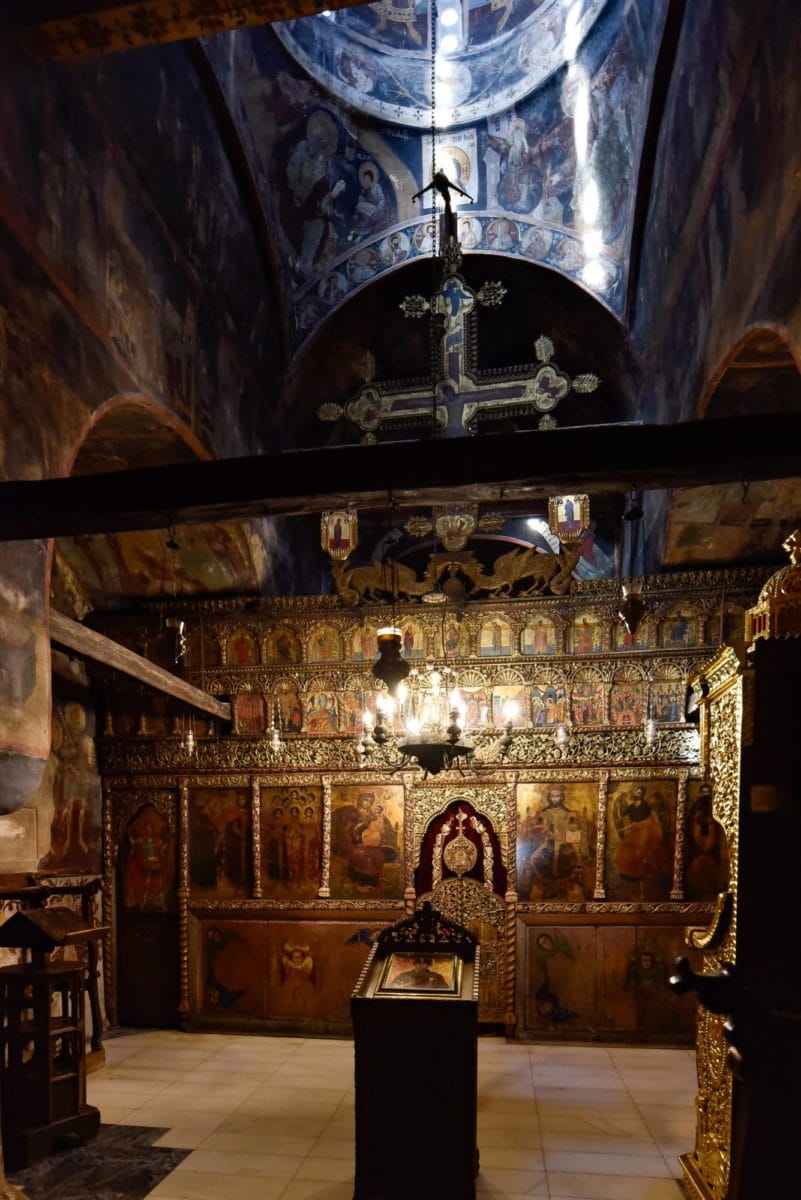
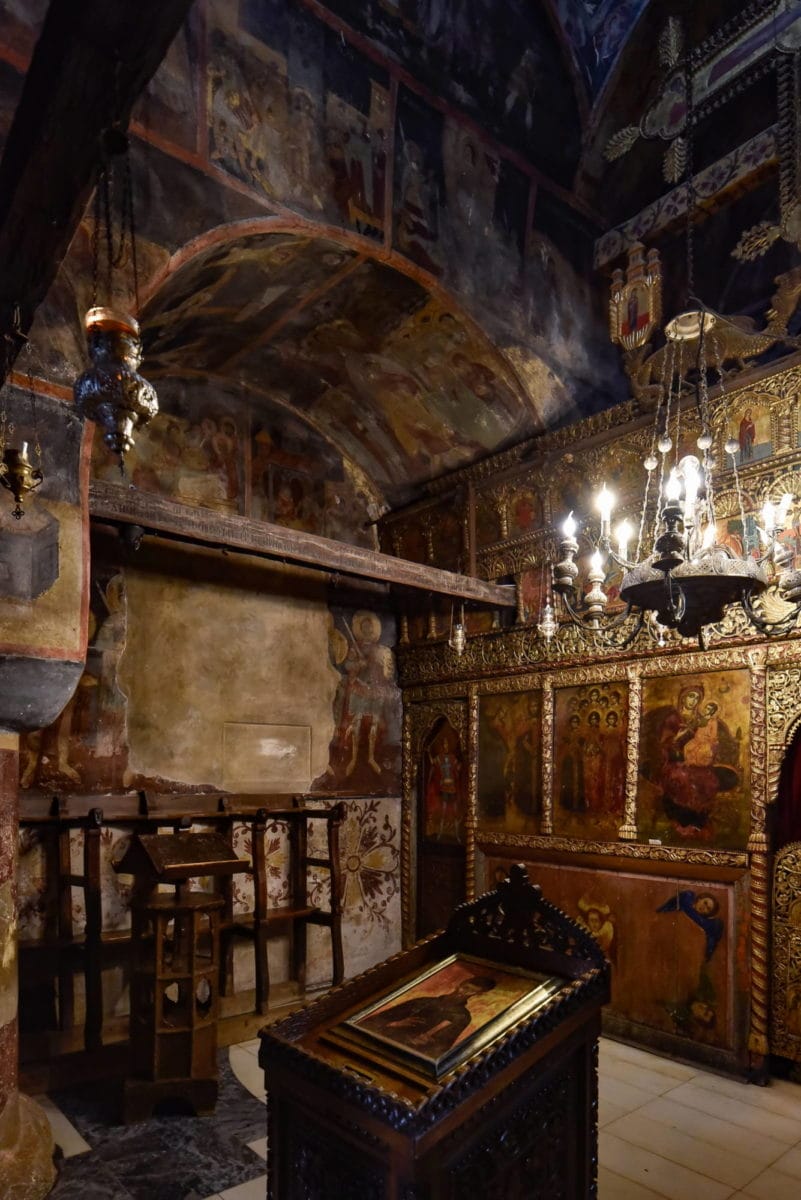
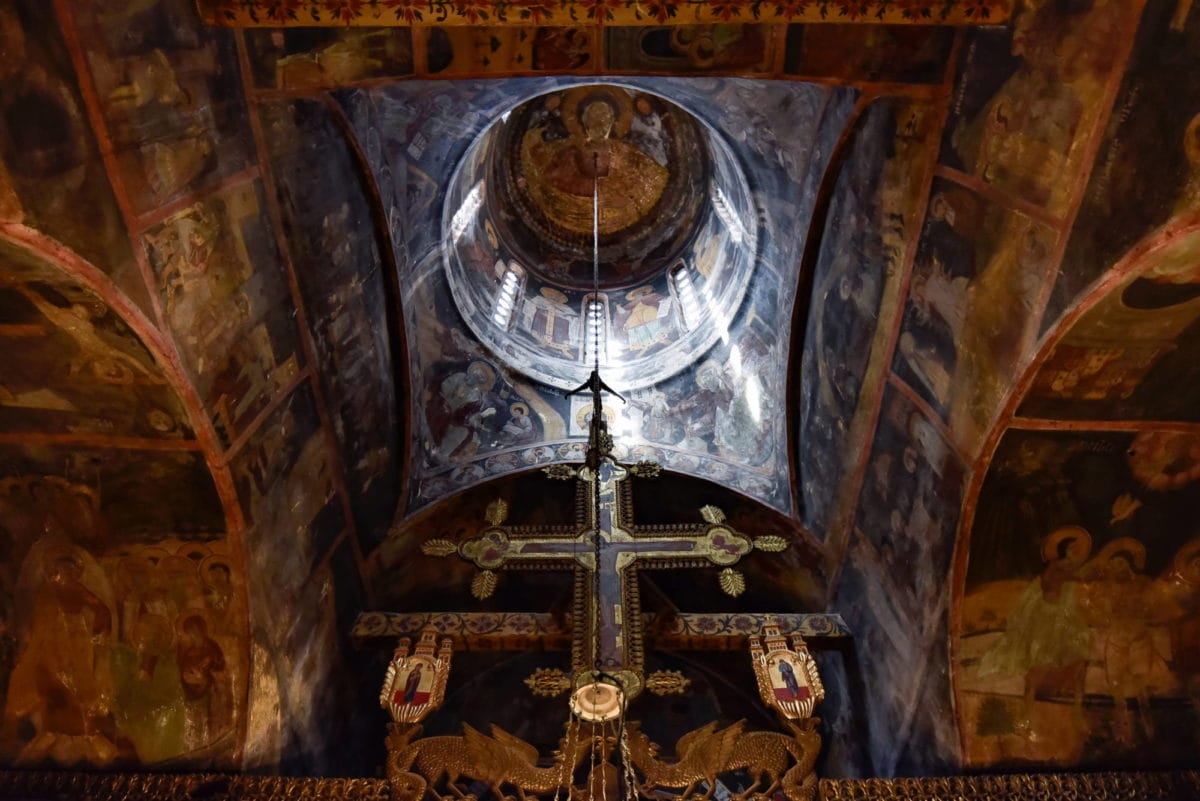
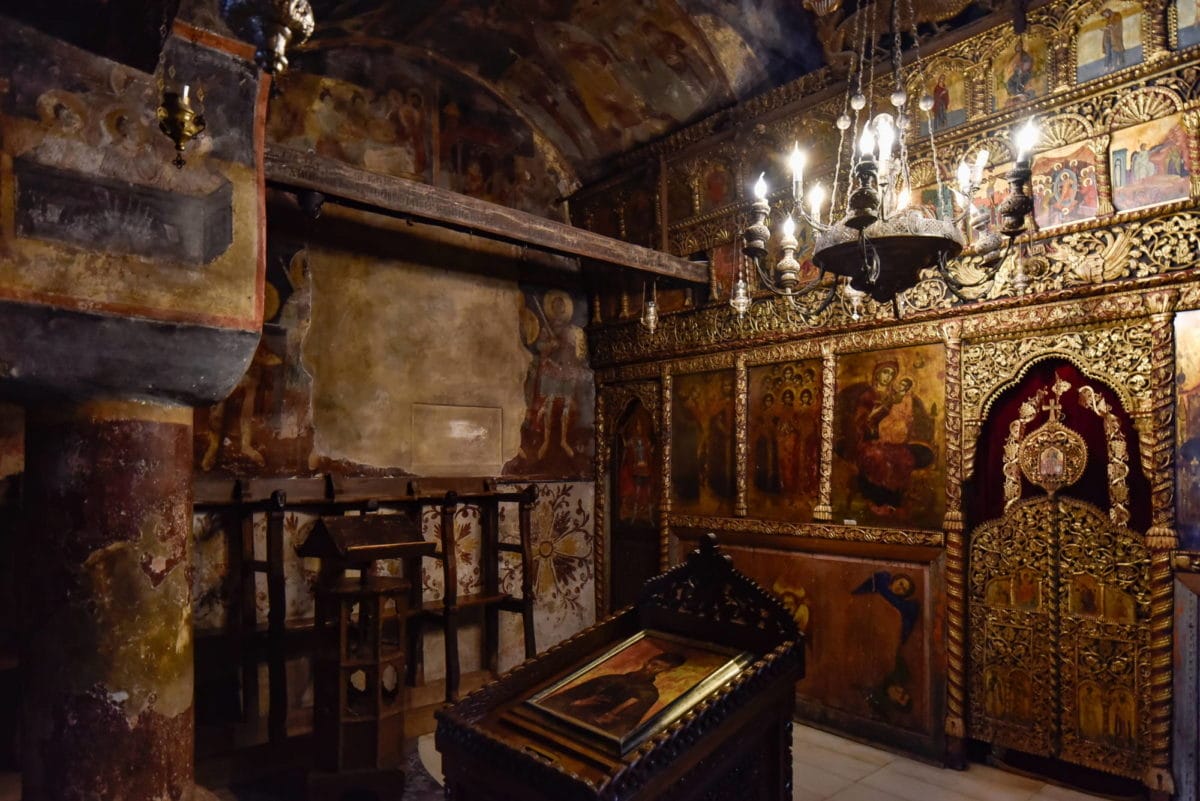
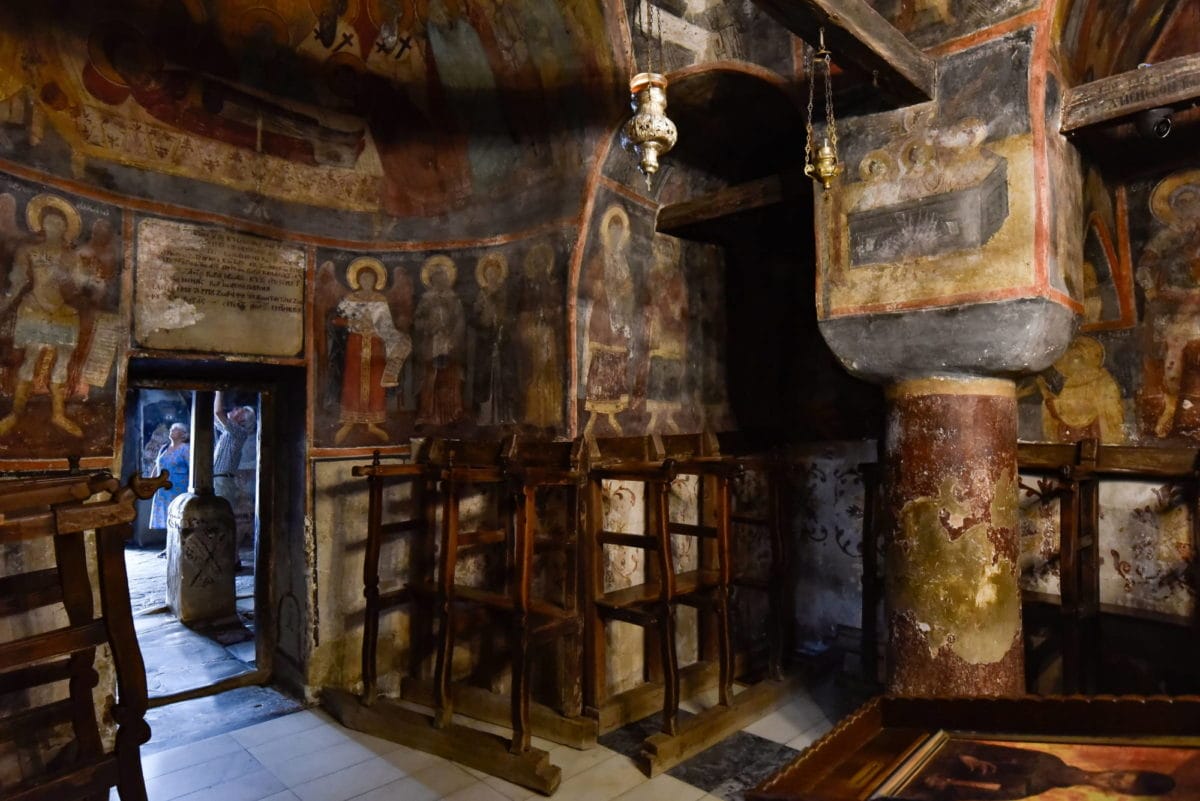
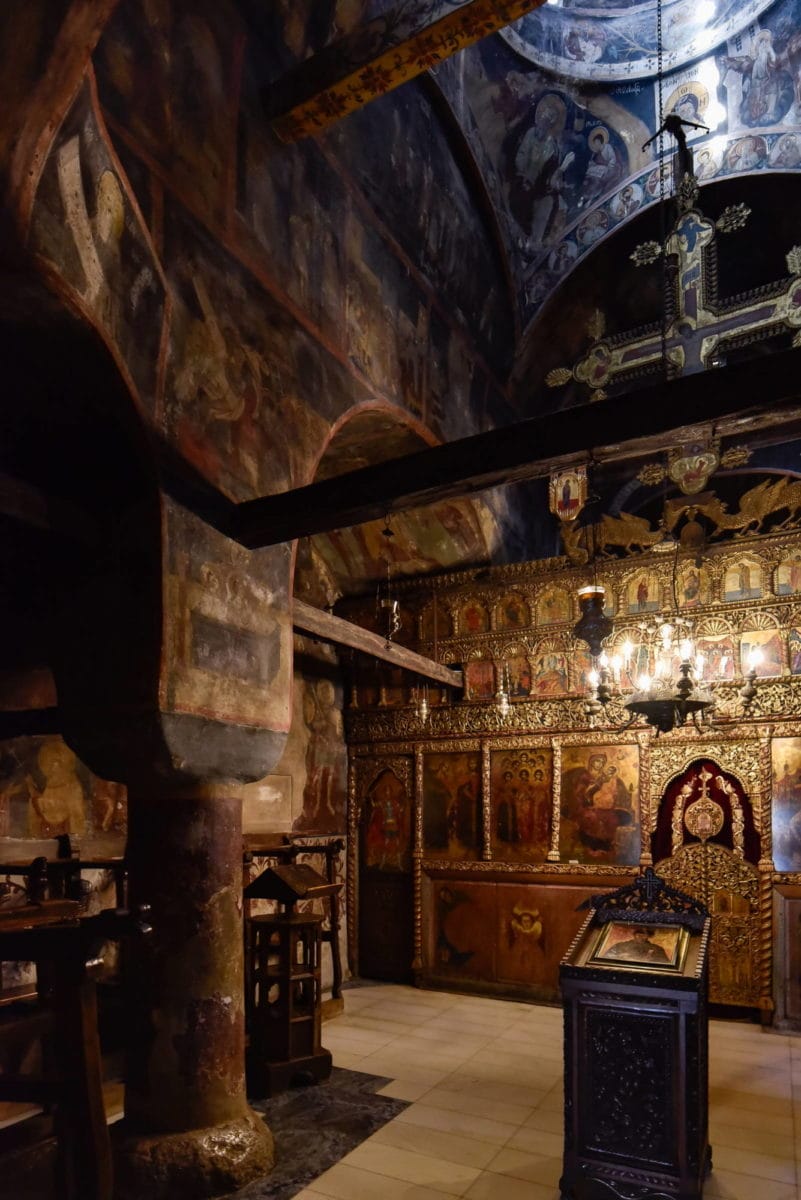
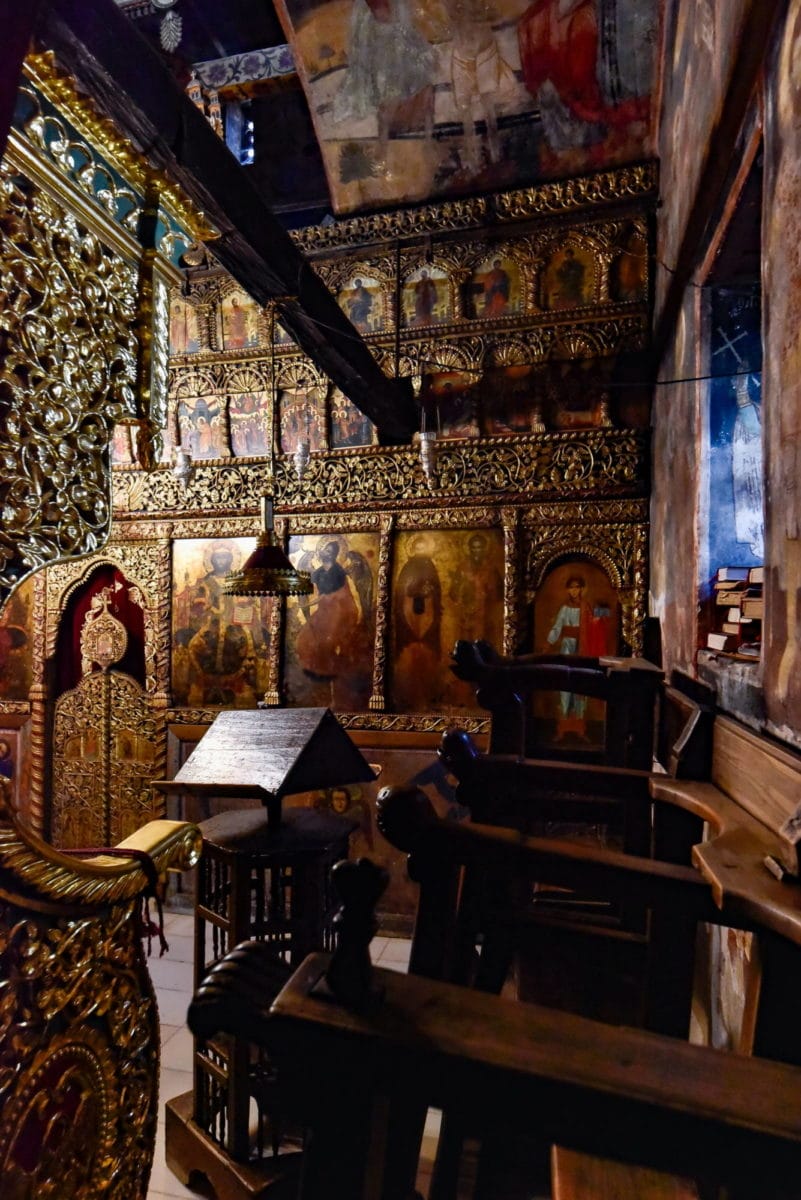
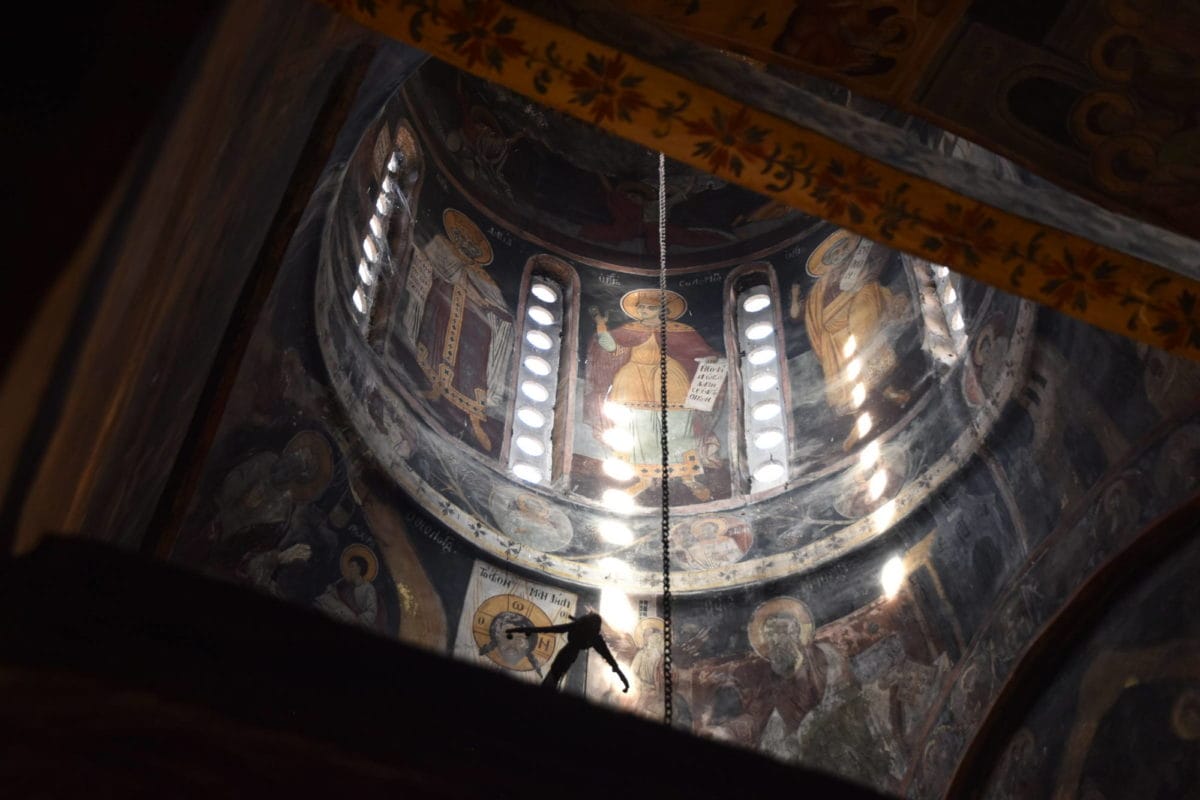
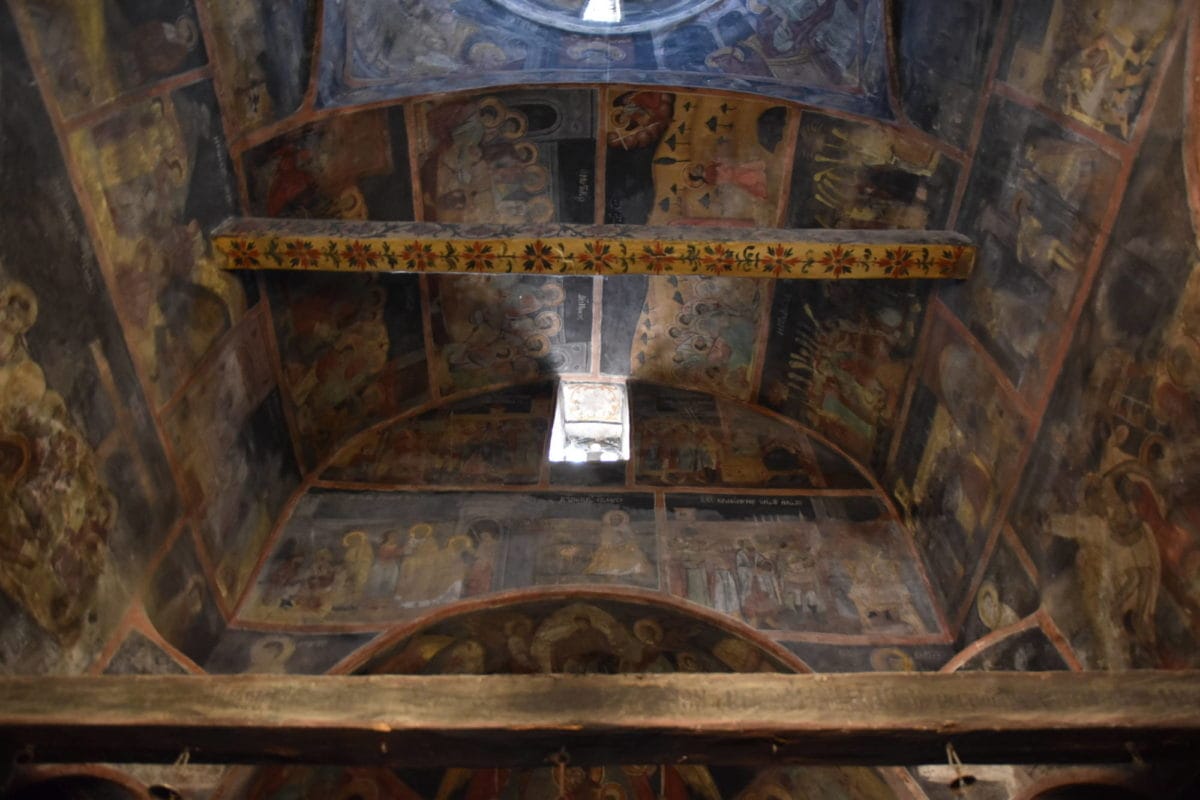
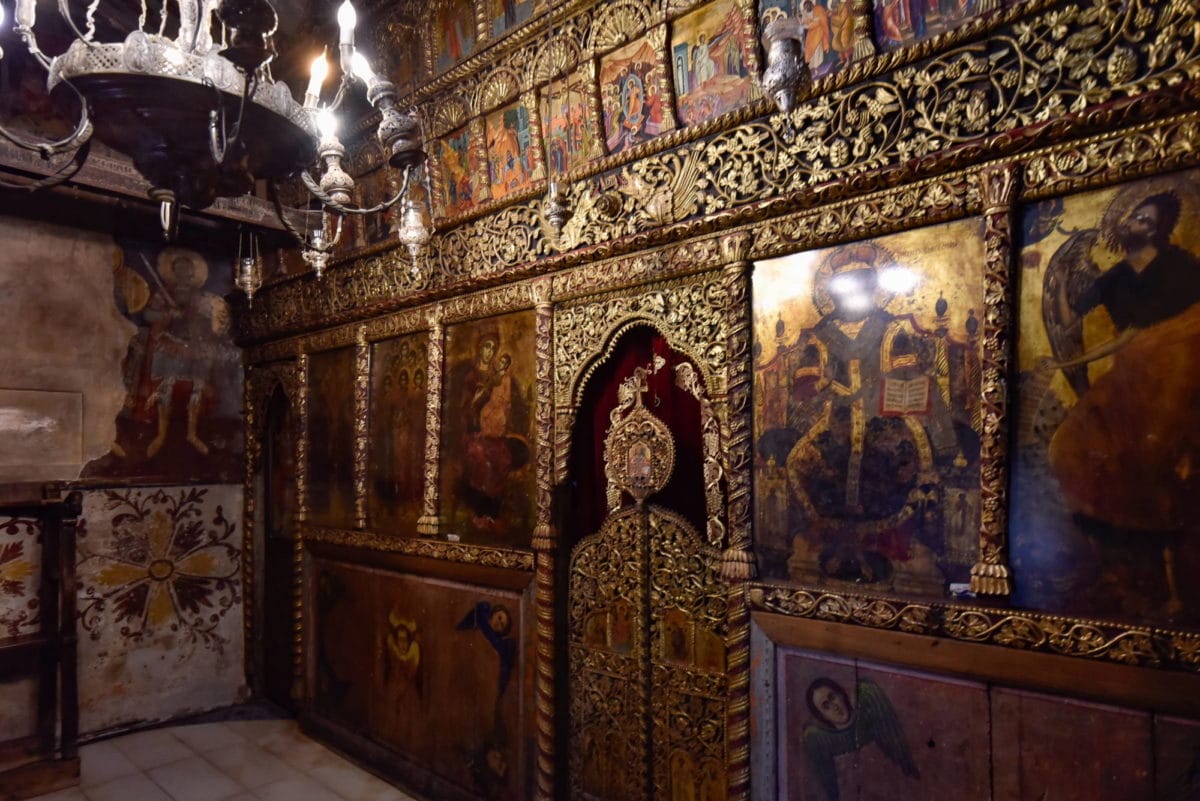
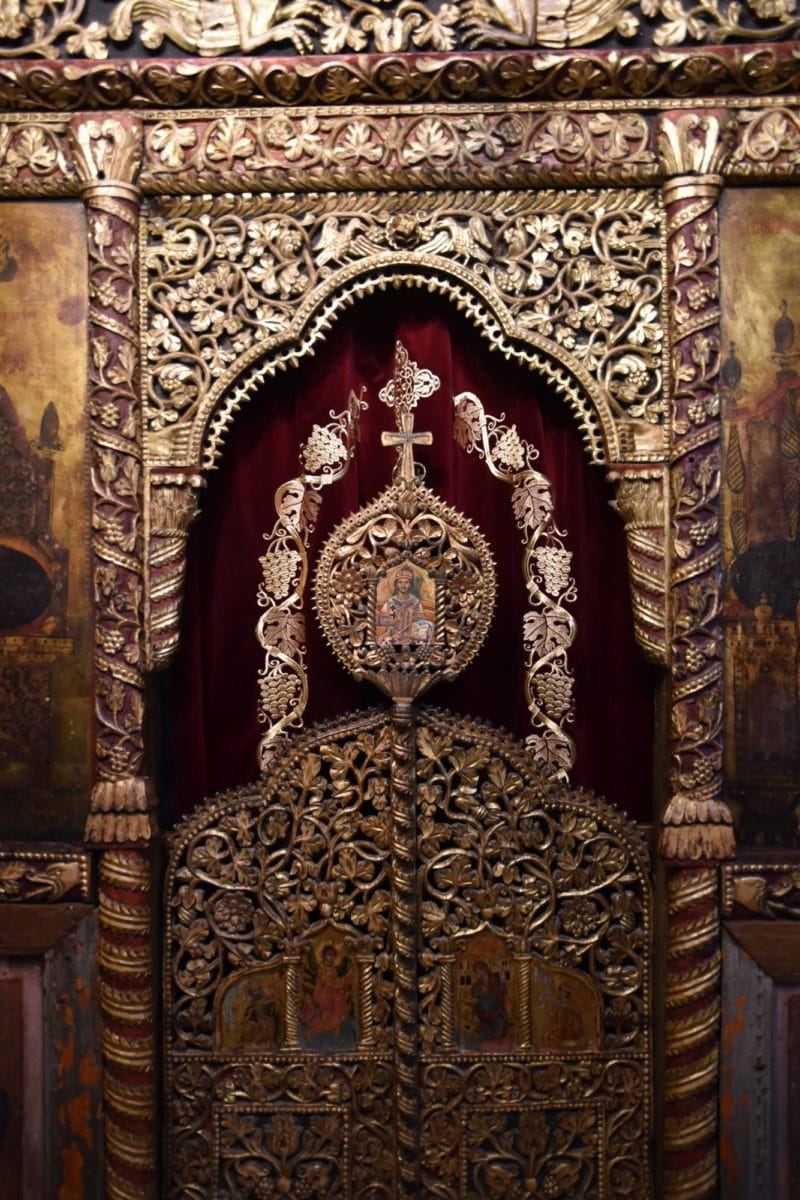
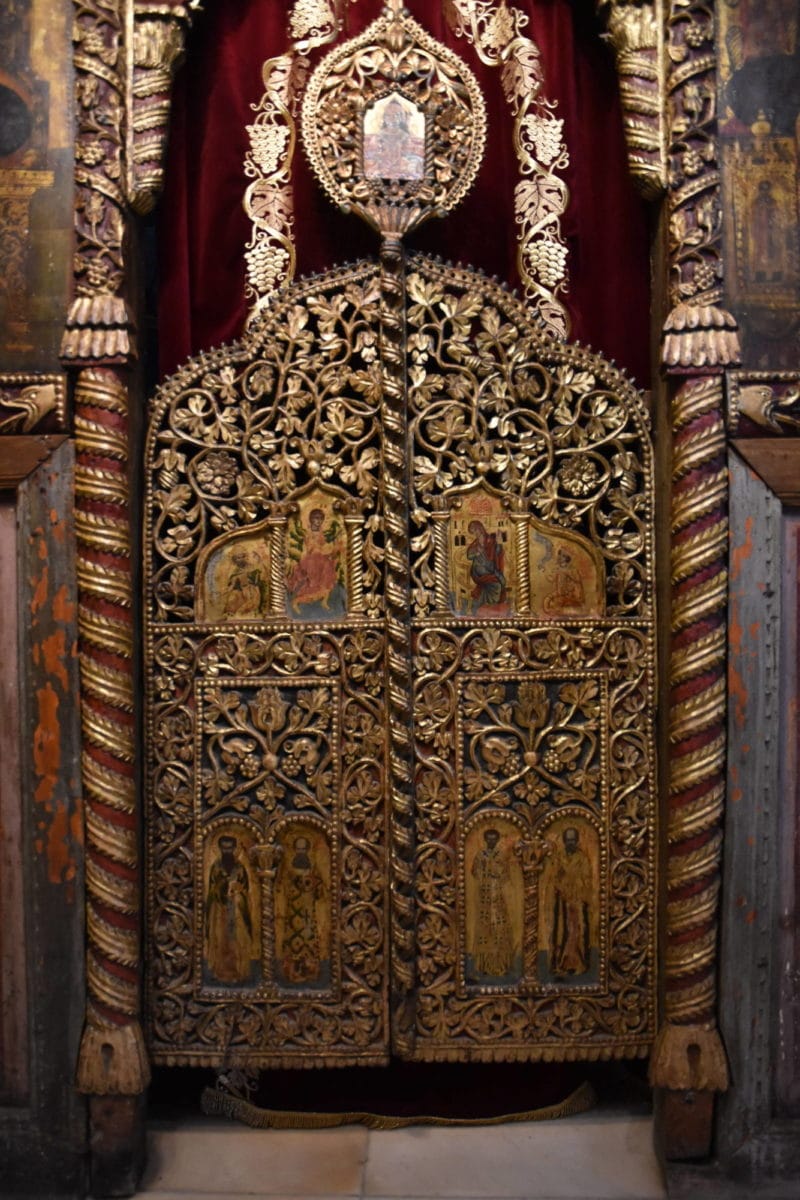
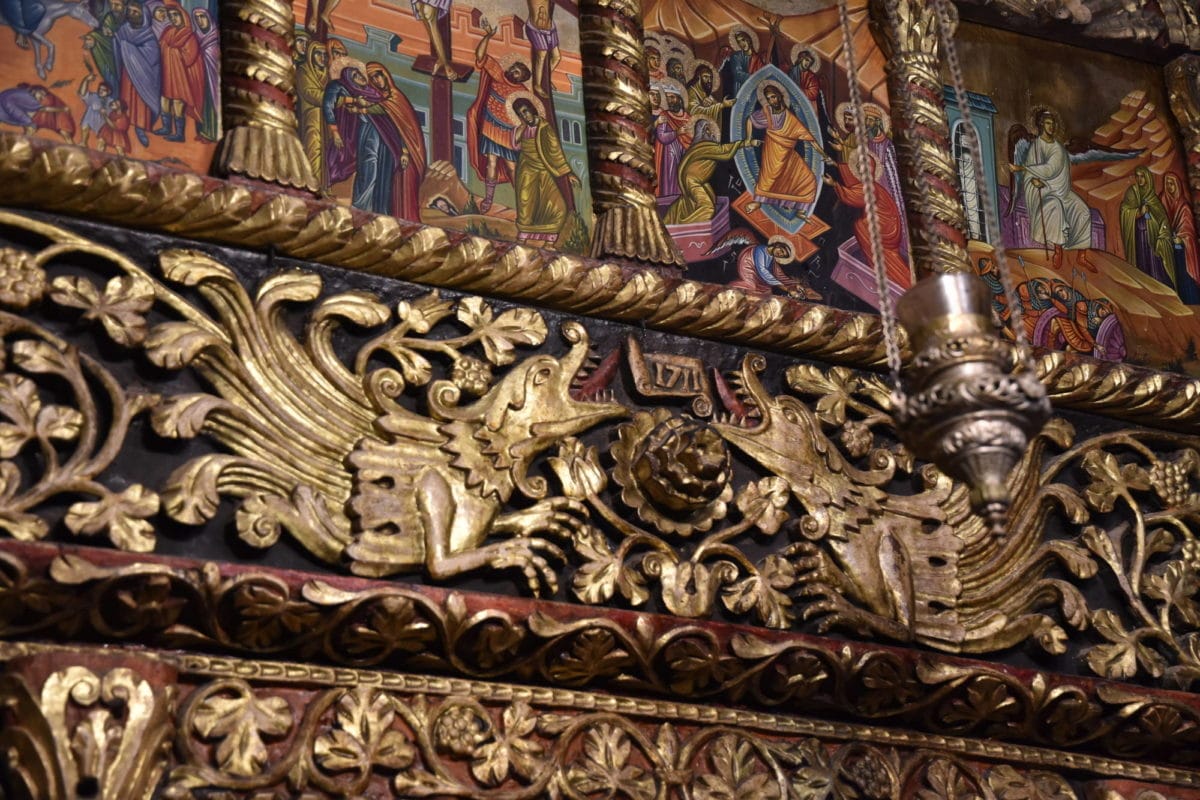
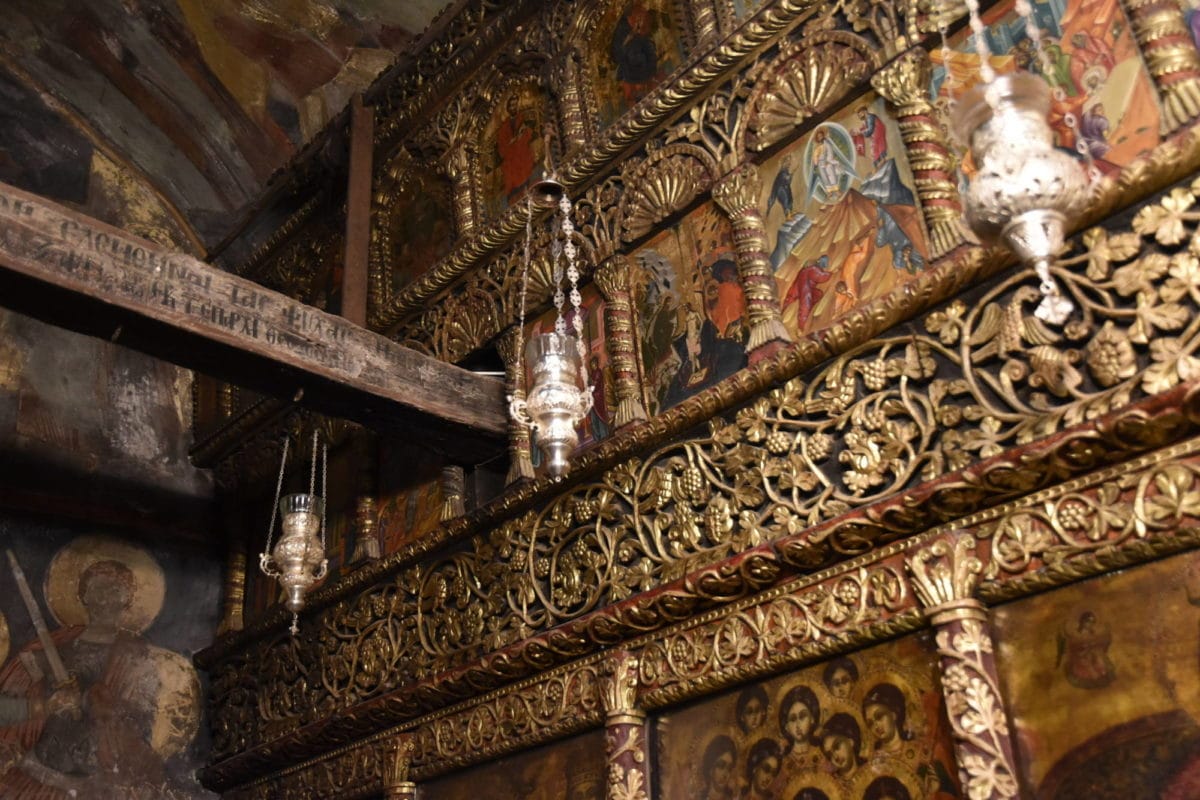
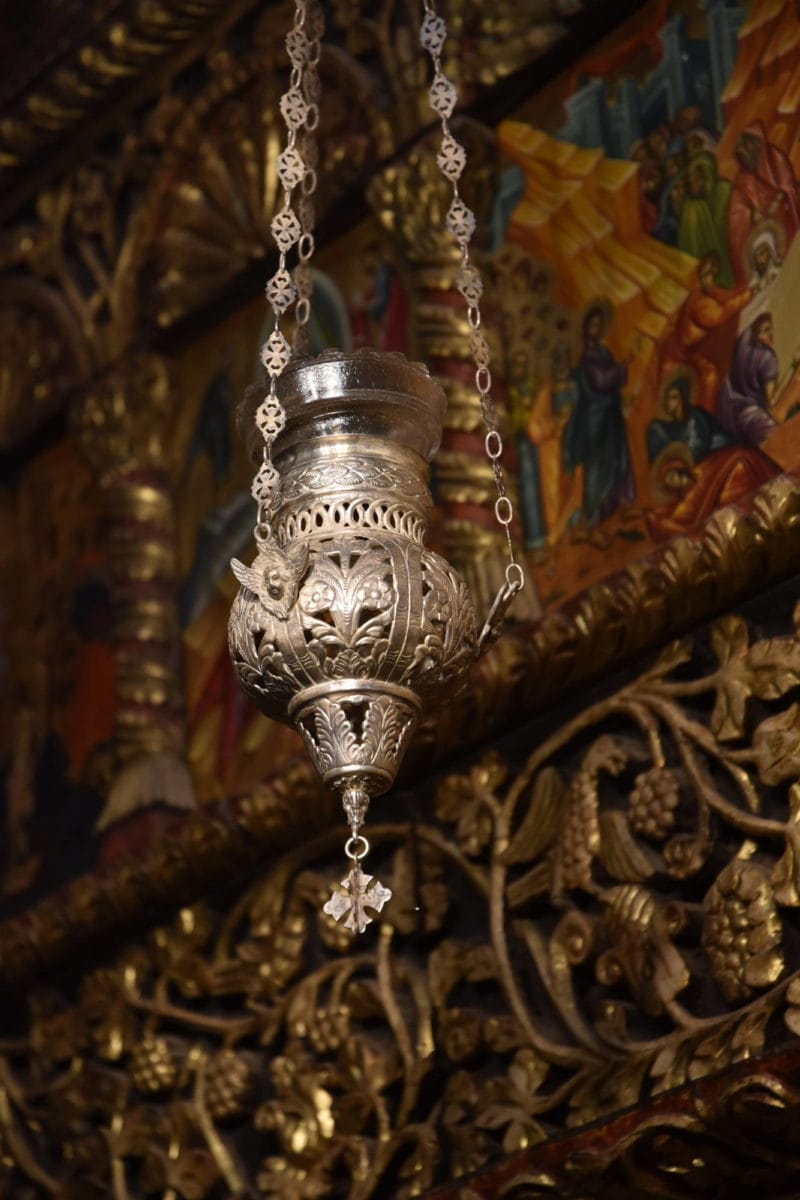
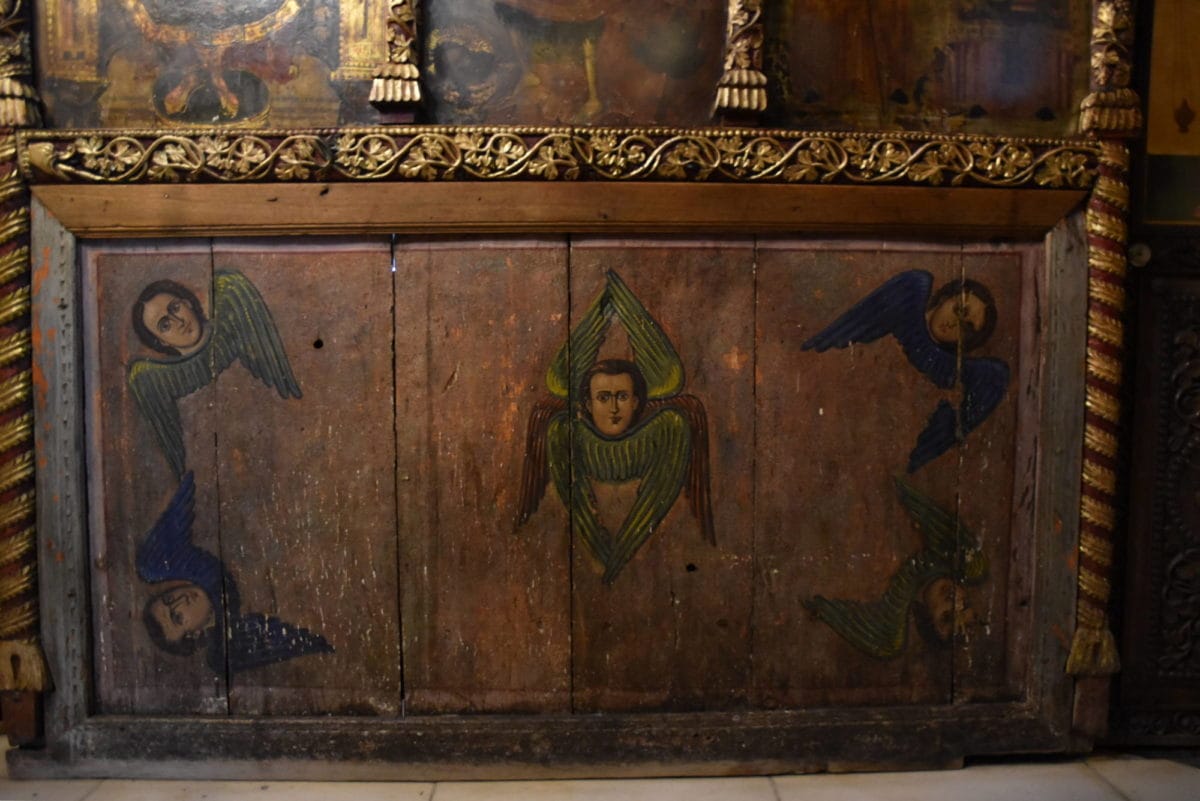
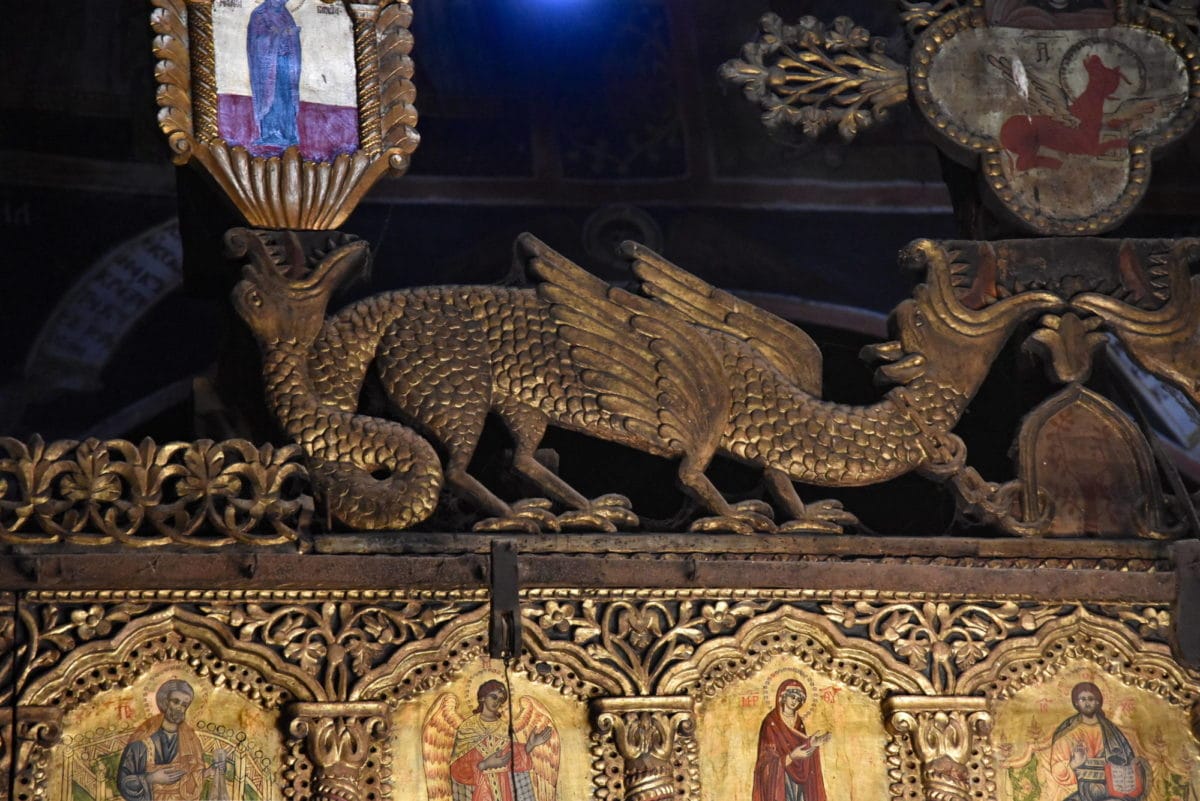
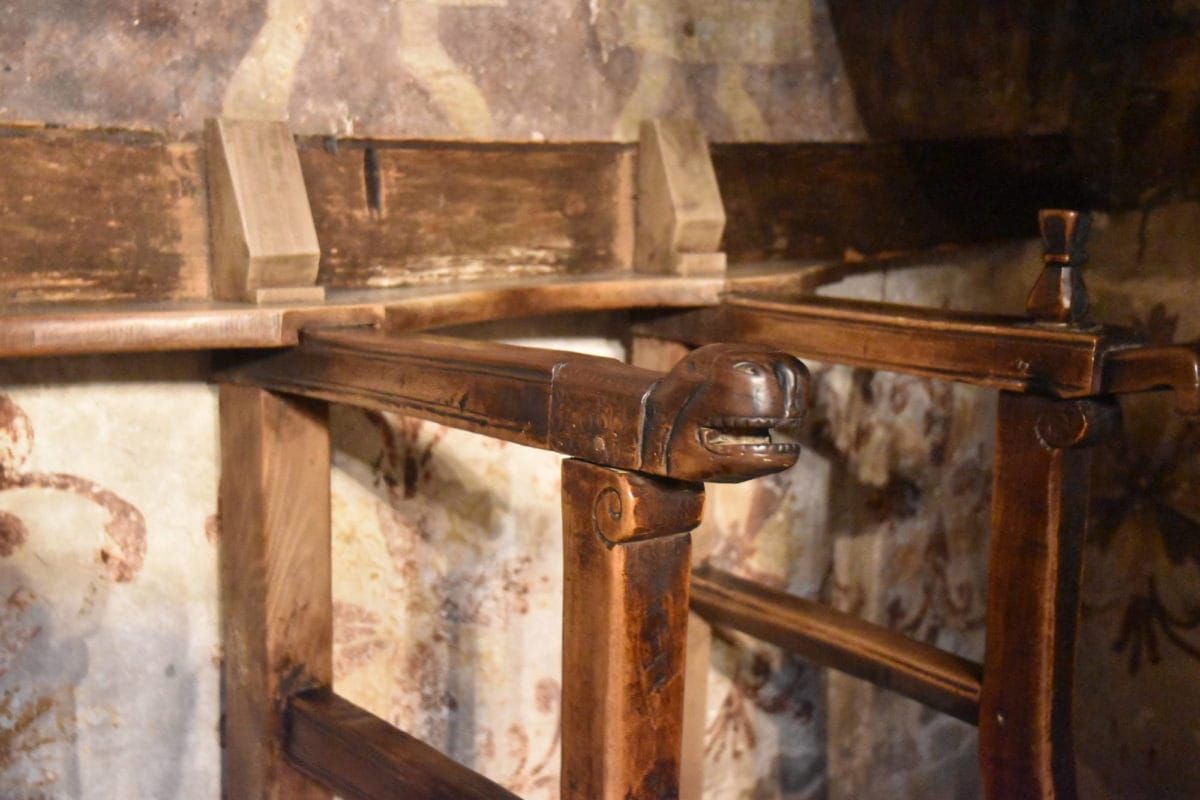
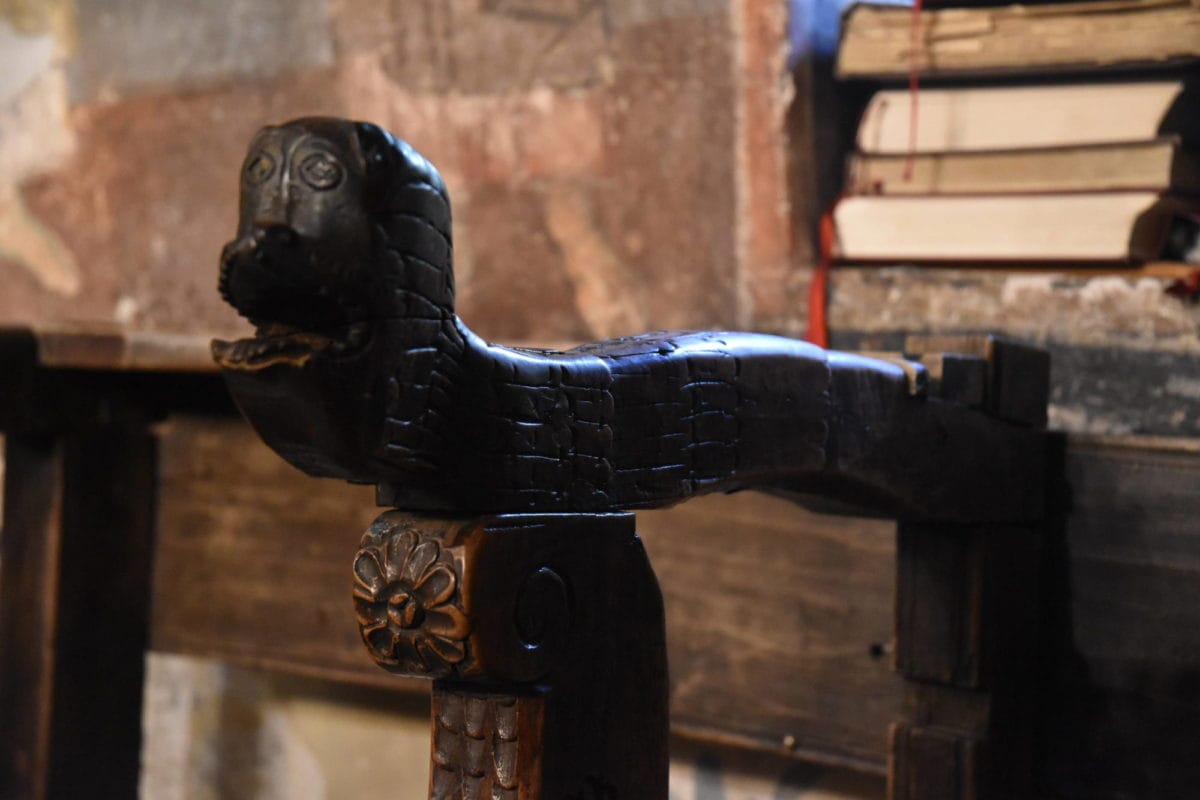
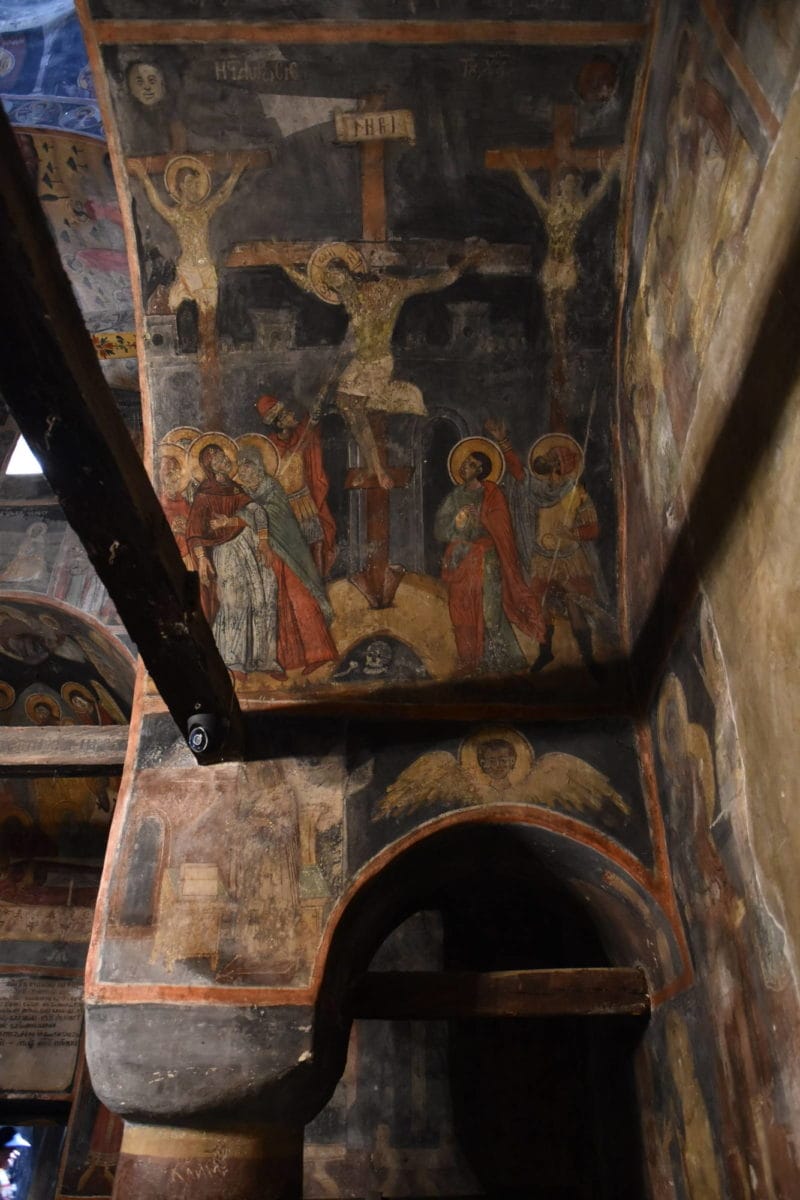
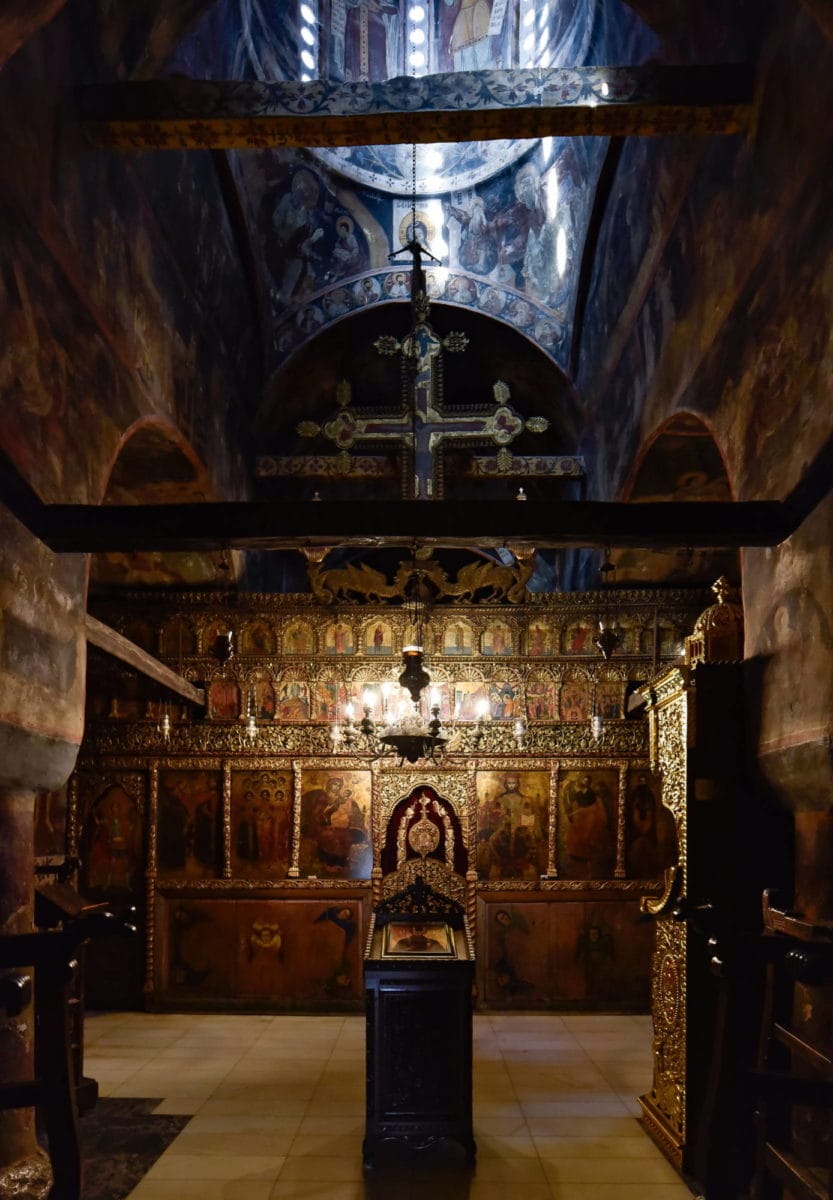
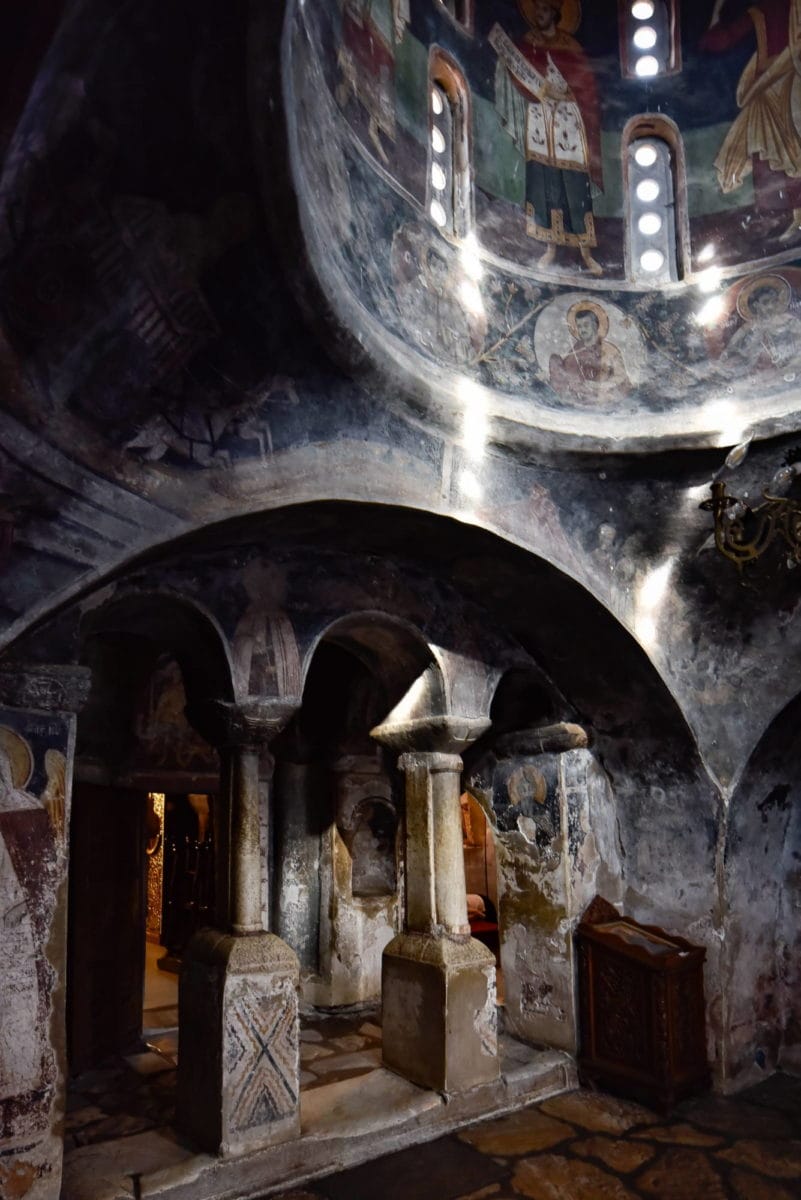
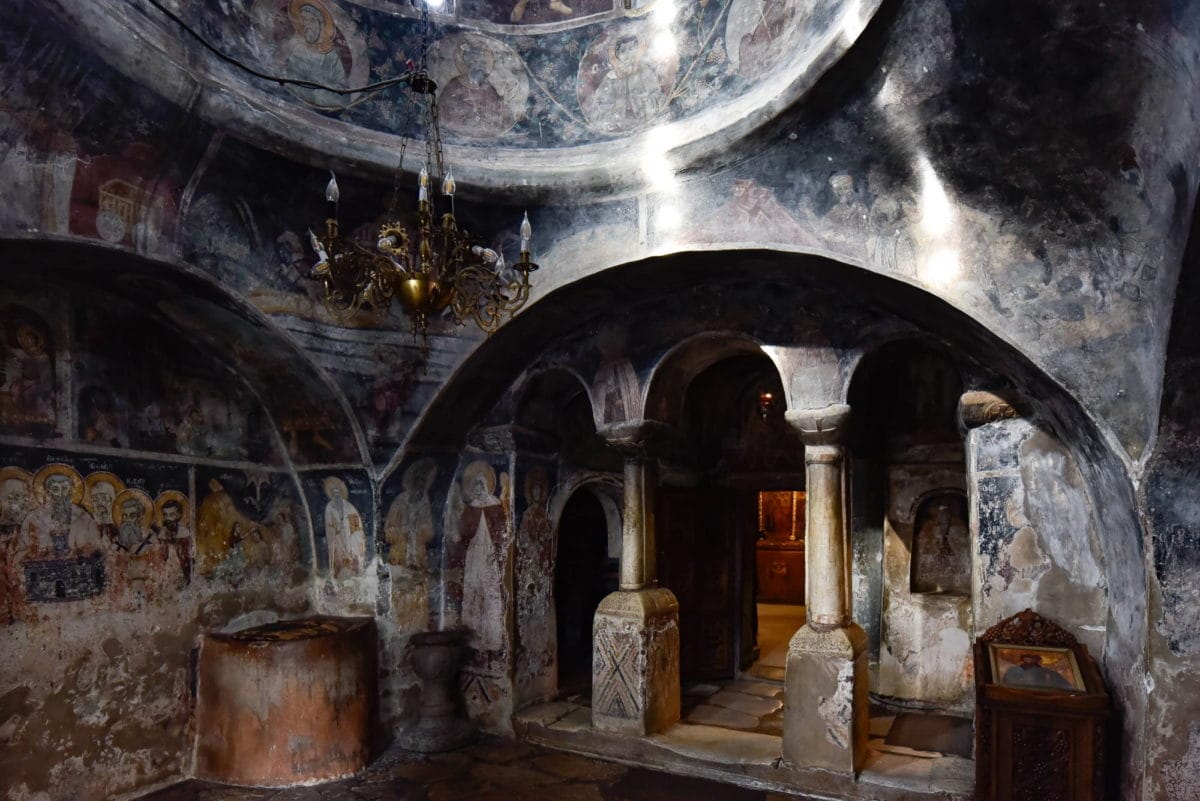
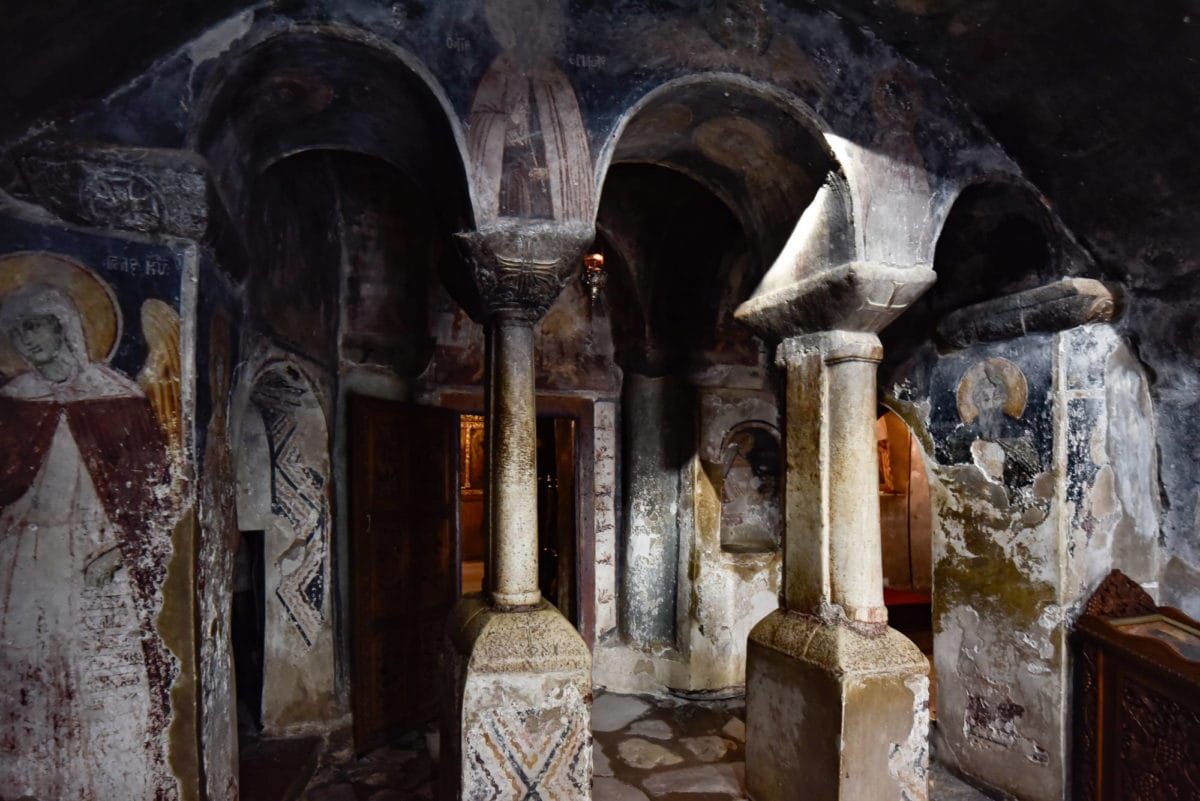
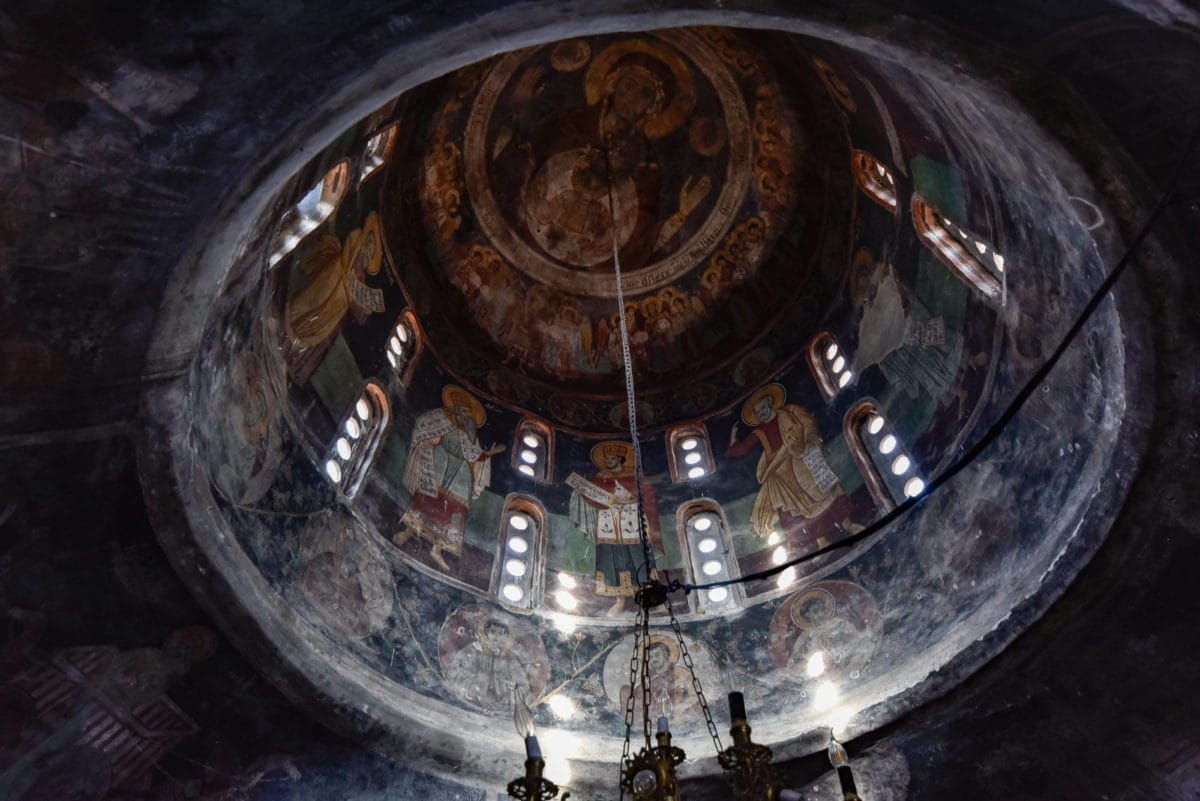
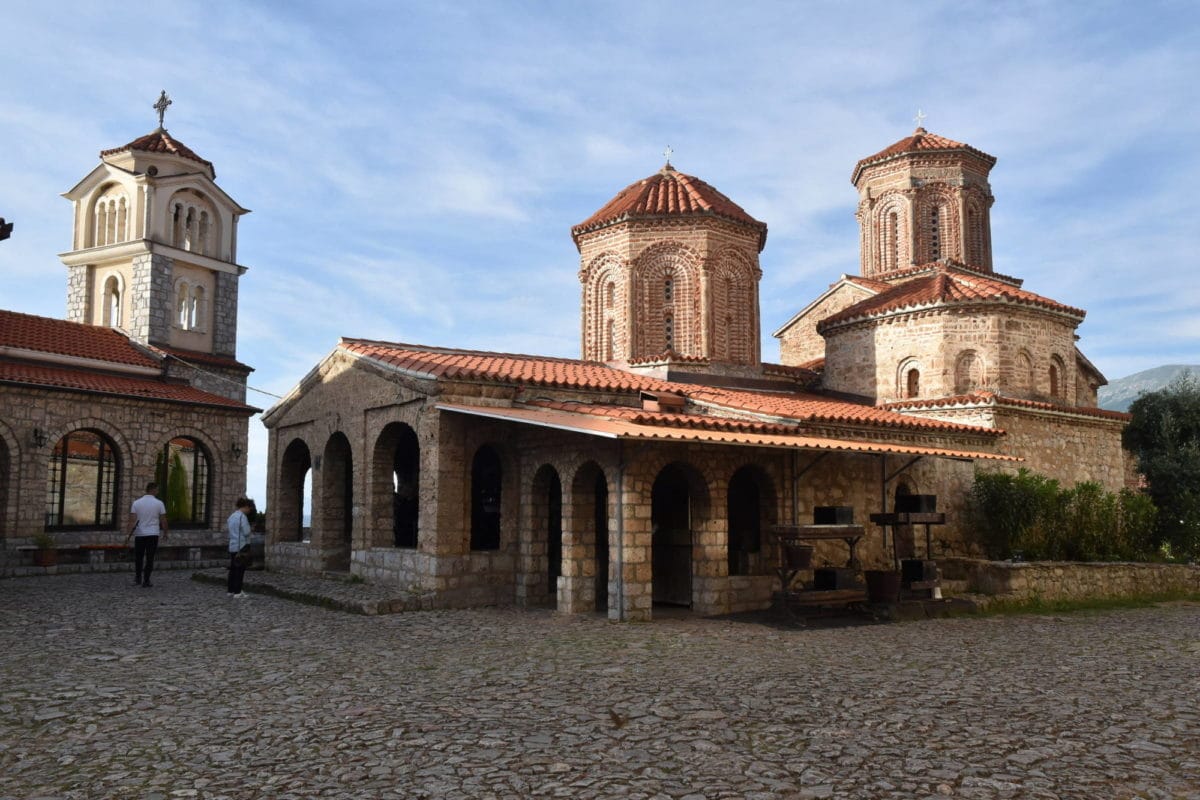

‘The small bed where those needing healing can sleep:’ there are similar practices in Anglo-Saxon and medieval England.
Glory to Jesus Christ! Simply beautiful!
Thank you for this beautiful article. What a heritage we have to be proud of.